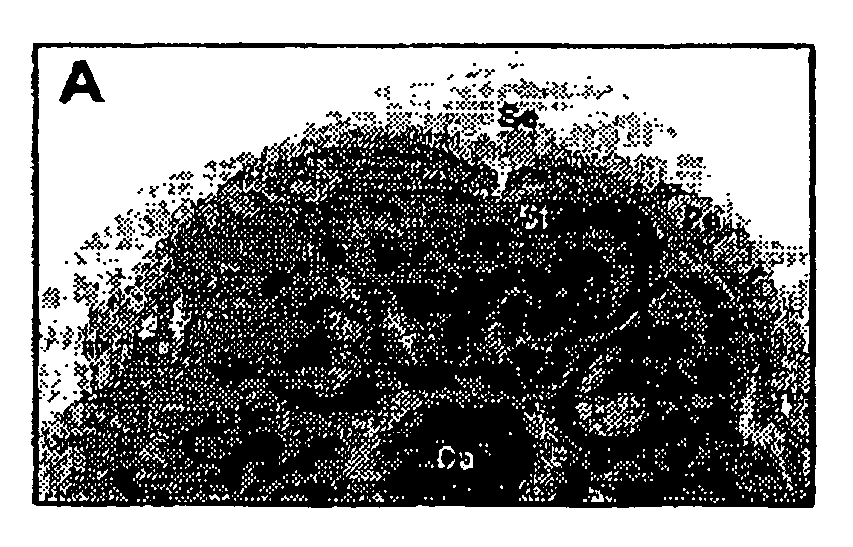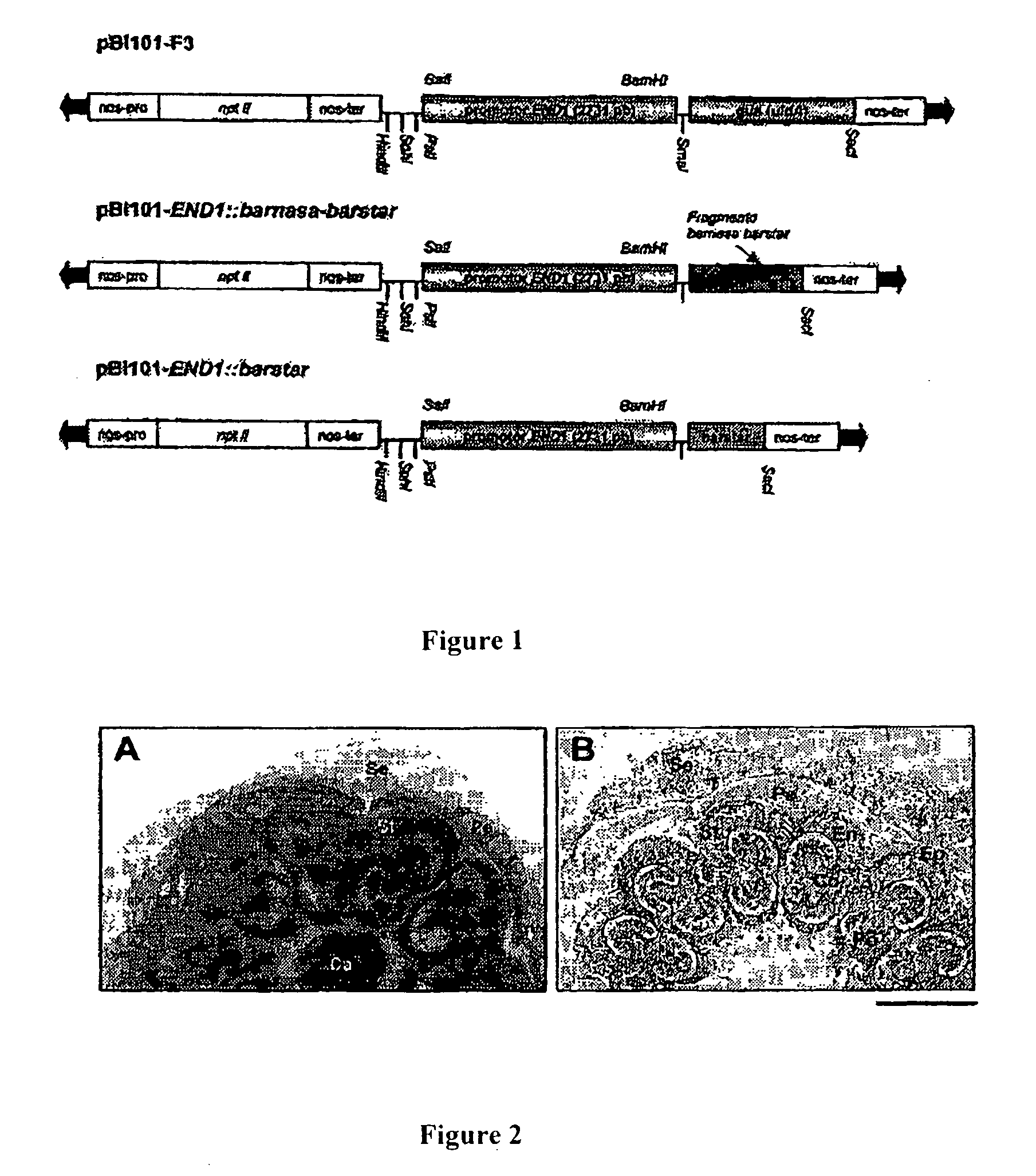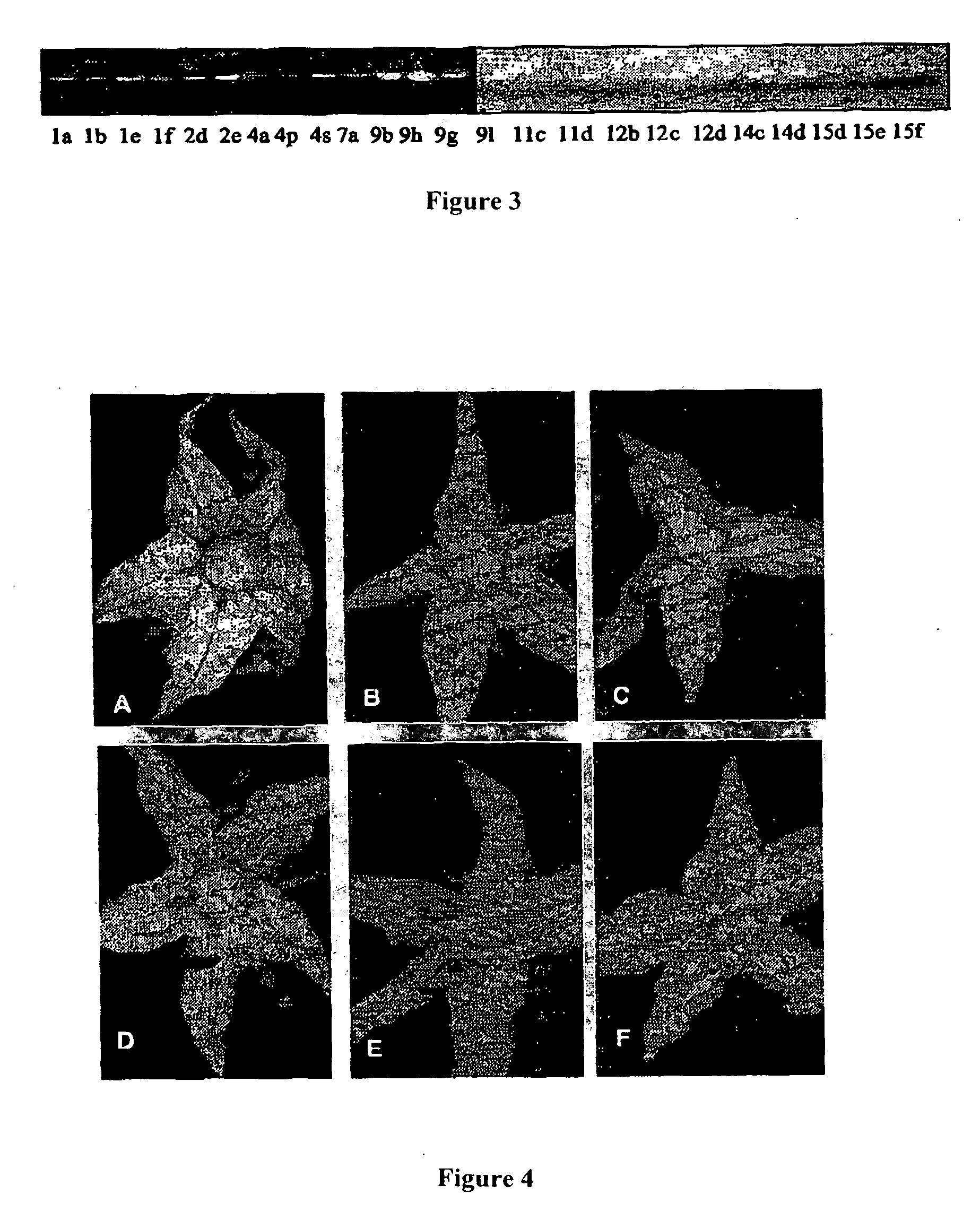Parthenocarpic tomatoes and production method thereof
a technology of parthenocarpic tomatoes and production methods, which is applied in the field of parthenocarpic tomatoes, can solve the problems of inability to germinate, inability to produce fertilisation, and inability to produce pollen grains
- Summary
- Abstract
- Description
- Claims
- Application Information
AI Technical Summary
Benefits of technology
Problems solved by technology
Method used
Image
Examples
example 1
Functionality Studies of pEND1 in Transgenic Plants of Arabidopsis thaliana, Tobacco (Nicotiana tabacum) and Tomato (Lycopersicon esculentum)
[0061]The specificity which the pea END1 gene promoter confers for expression of foreign genes in the anther (WO 01 / 073088; and Gómez M. D.; Beltrán J. P.; Cañas L. A. 2004. The pea END1 promoter drives anther-specific gene expression in different plant species. Planta. In press (published online: DOI 10.1007 / s00425-004-1300-z), offers the possibility of using it in cellular ablation assays of specific tissues thereof. The promoter would direct the expression of a cytotoxic gene in those tissues where END1 is active and a check would be made of whether the destruction of the latter produced male sterility in those plants where that gene is expressed.
[0062]Previously (see example 1 of WO 01 / 073088), the inventors conducted functionality studies of that promoter in different species of pea by genetically transforming plants of Arabidopsis thalian...
example 2
Obtaining of Parthenocarpic Tomato Fruits (Cv. Micro-Tom) Associated with the Production of Androsterile Plants by Means of the Specific Ablation of Anthers with a Ribonuclease (Barnase) Controlled by the Pea END1 Promoter
Materials and Methods
Plant Material
[0065]Seeds of the Micro-Tom variety of tomato (Lycopersicon esculentum) were used as starting material.
In Vitro Culture of Tomato Plants
[0066]The culture of tomato in glass flasks was carried out in order to germinate sterile seeds, so as to obtain the cotyledons which were going to be used as explants for the transformation and for carrying out the genotype analysis of the T1 generation. This was conducted in cabins with a constant temperature of 25° C., under long-day photoperiod conditions (16 h light and 8 h darkness), with a light intensity of 90 μE m−2 s−2 supplied by 36W Grolux type fluorescent tubes (Sylvania).
[0067]The tomato seeds were placed in mesh bags in a glass flask of diameter 9 cm and height 10 cm, containing 70...
PUM
| Property | Measurement | Unit |
|---|---|---|
| Volume | aaaaa | aaaaa |
| Mass | aaaaa | aaaaa |
| Mass | aaaaa | aaaaa |
Abstract
Description
Claims
Application Information
 Login to View More
Login to View More - R&D
- Intellectual Property
- Life Sciences
- Materials
- Tech Scout
- Unparalleled Data Quality
- Higher Quality Content
- 60% Fewer Hallucinations
Browse by: Latest US Patents, China's latest patents, Technical Efficacy Thesaurus, Application Domain, Technology Topic, Popular Technical Reports.
© 2025 PatSnap. All rights reserved.Legal|Privacy policy|Modern Slavery Act Transparency Statement|Sitemap|About US| Contact US: help@patsnap.com



